Austria’s national football team has undergone a significant transformation under the leadership of Ralf Rangnick. Known for his innovative approach and tactical understanding, Rangnick has implemented strategies that have revitalized the team’s playing style. This tactical analysis delves into the key elements of Austria’s gameplay under Rangnick, examining the formations, pressing tactics, and player roles that define their current approach. Join us as we explore how Rangnick’s influence shapes Austria’s footballing identity and drives the team towards a new era of success.
Build-up
Low Build-up
In the low build-up, Rangnick sets his team up in a 1-4-2-3-1 formation.
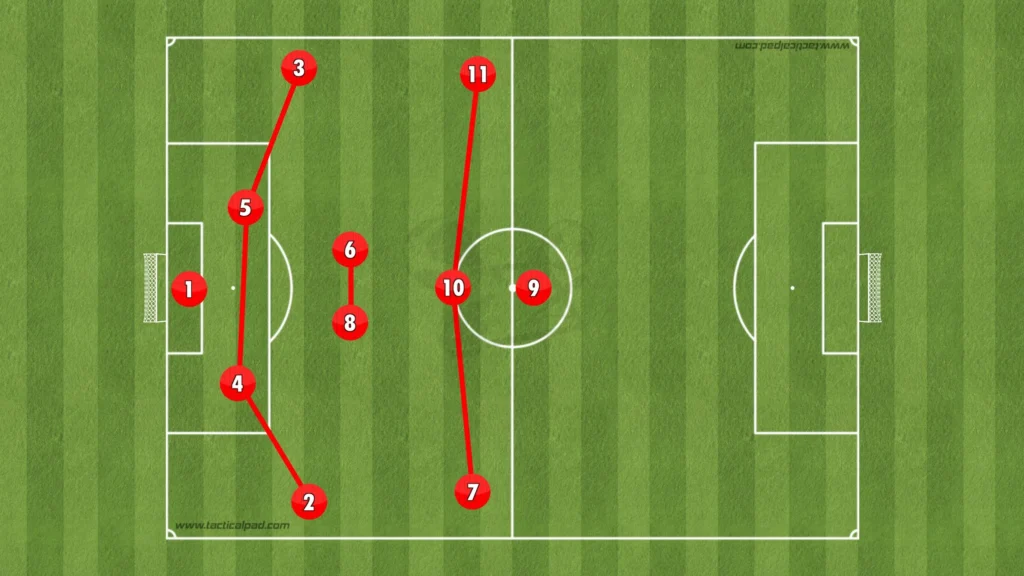
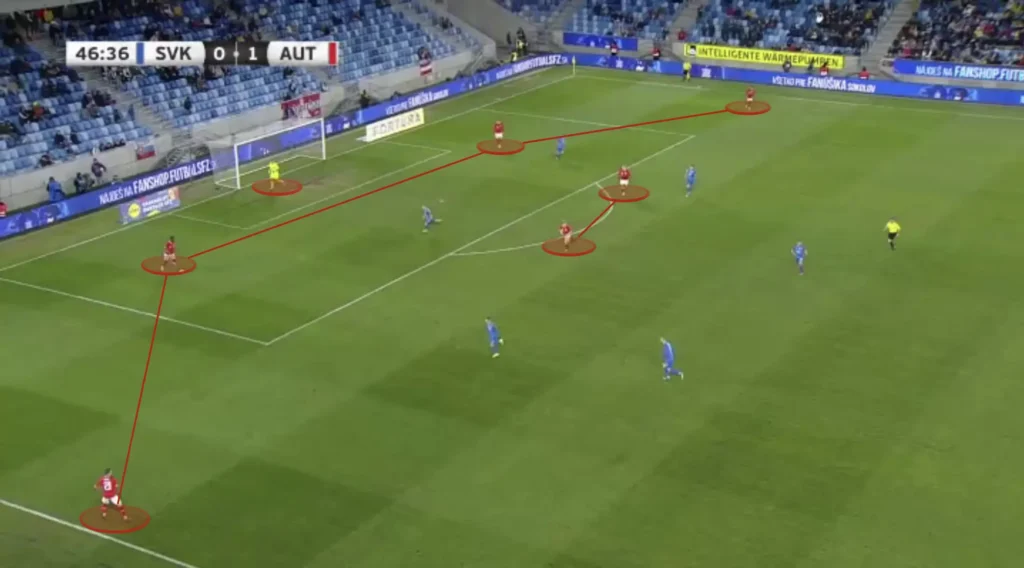
The wingers usually start wide and come in when the play starts. This usually gives Austria a numerical superiority in the midfield, which will help them beat the opposition’s press. The wingers also have better conditions to win the second balls when they are in the middle. When the goalkeeper plays a long ball toward the striker, they will work together with the number-ten to win the second ball, which allows Austria to establish possession higher up the pitch.
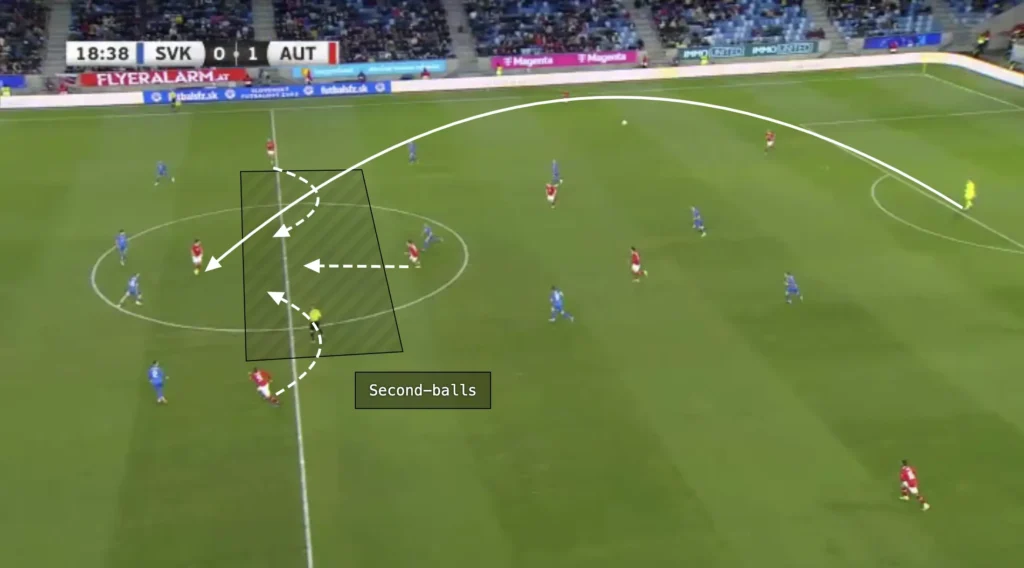
High Build-up
Rangnick’s Austria uses a 1-2-4-3-1 formation in the high build-up, with the wingers coming in and the fullbacks pushing up.
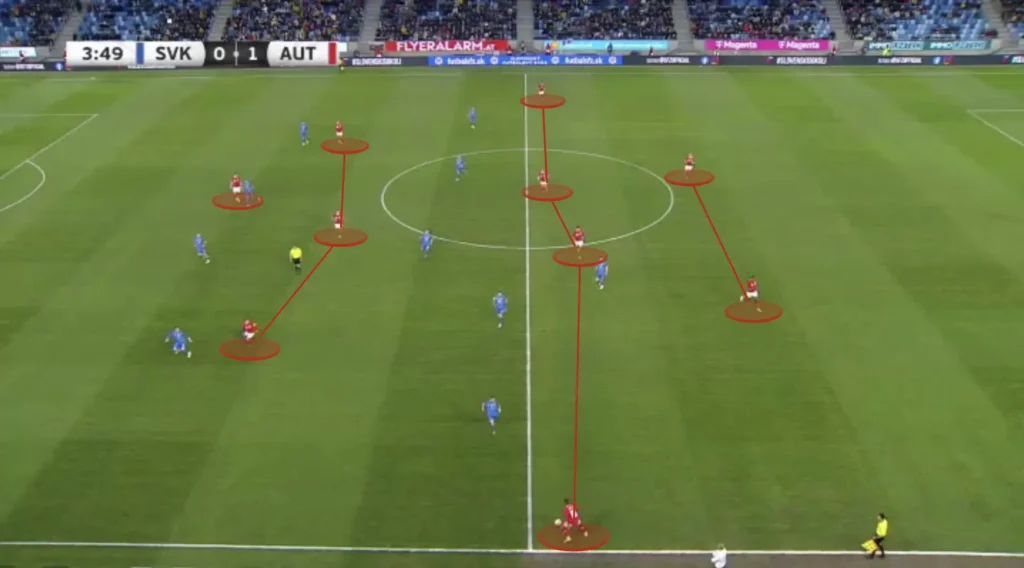
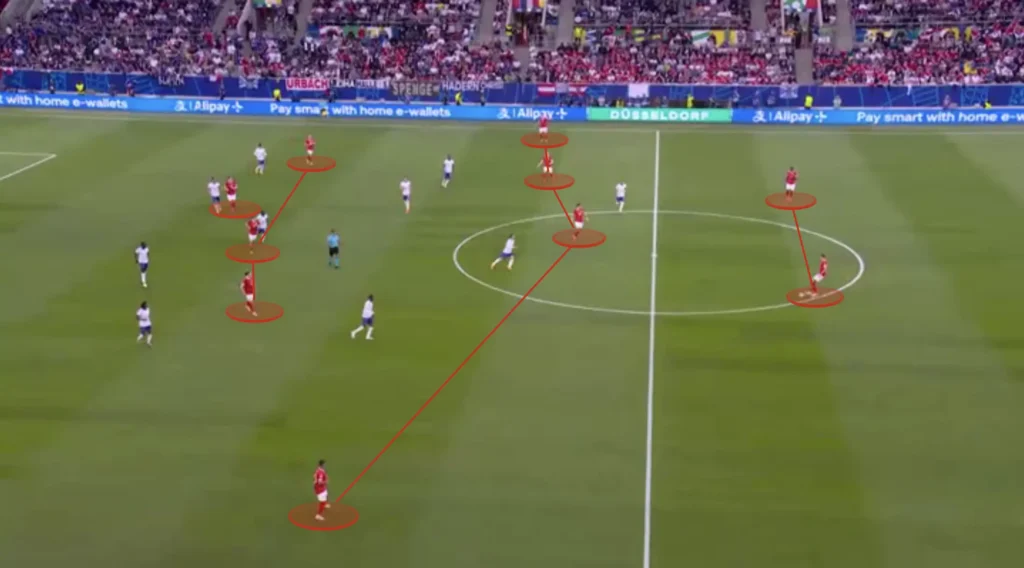
When the wingers come in, the opposition fullbacks also come in, which opens massive spaces out wide. This allows the Austria fullbacks to make runs into these spaces and receive through-balls from the midfield or backline. They will have enough time and space to take the ball past the opposition midfield and cross the ball into the box.
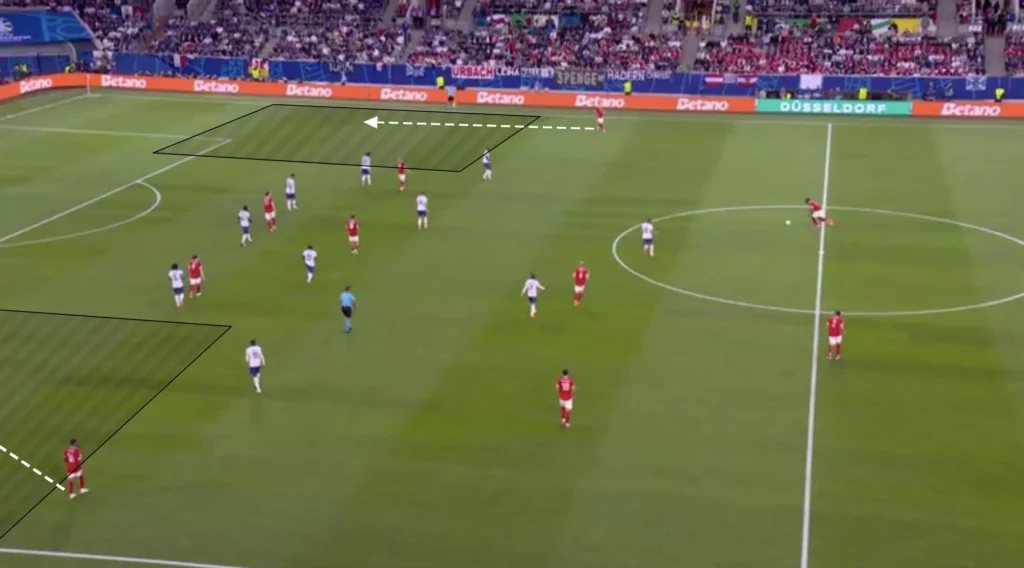
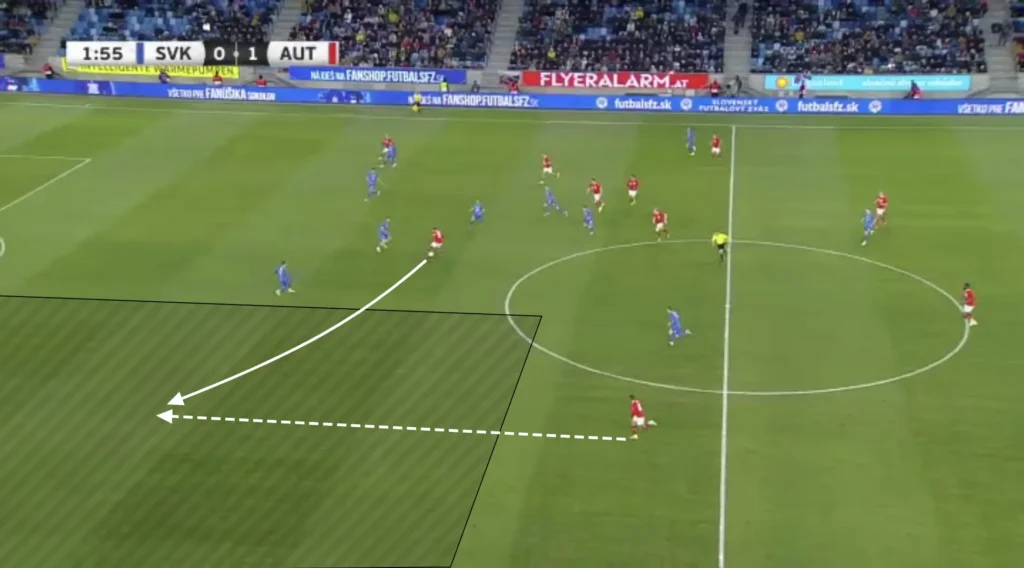
Having only two players out wide and the rest in the middle also creates more options in the center and less space between the players. Rangnick likes this because he prioritizes playing through the middle. He needs one player out wide to pull the opposition apart while the rest create numerical advantages in the midfield areas. This builds good conditions in defensive transitions, allowing more players to press when they lose the ball. Another purpose for keeping many players in the middle is to shorten the distance between them. This shortens the length of the passes, which naturally shortens the time between passes. This means the opposition players will have less time to push up and press, giving the Austria players more time and control.
Changing Formation
Austria often rotates in their build-up, creating new formations to confuse opponents. They adapt to their opponent’s formation to create numerical advantages in different areas, allowing them to beat the defense and score more goals. Their most frequent formation change is to drop one of the holding midfielders, usually Florian Grillitsch, into the backline, creating a 1-3-1-5-1 formation. Austria often do this when playing against two forwards. Creating a 3v2 with the backline against the opposition’s forwards, instead of a 2v2, means that one center-back will be free, allowing them to beat the opposition’s forward line.
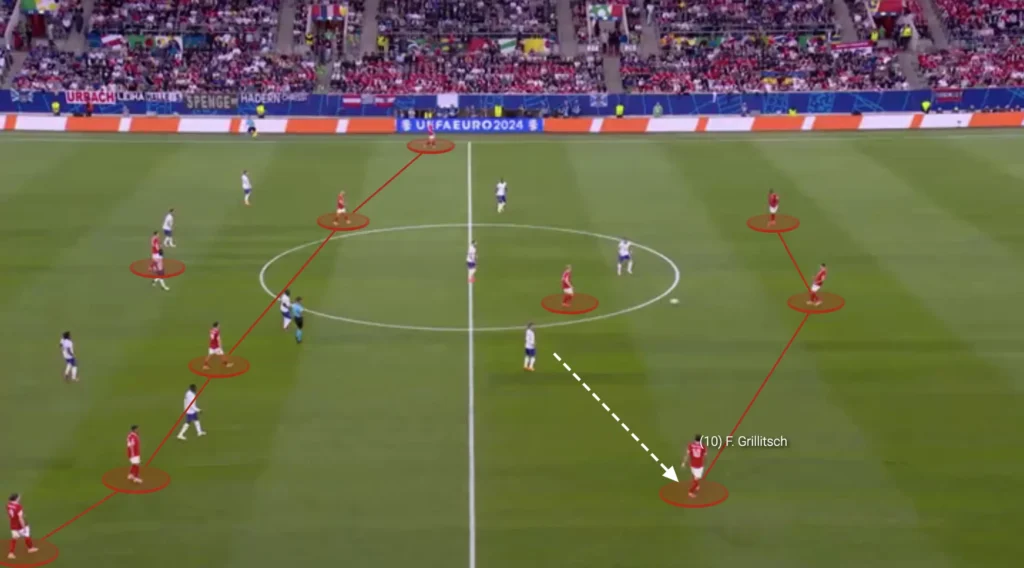
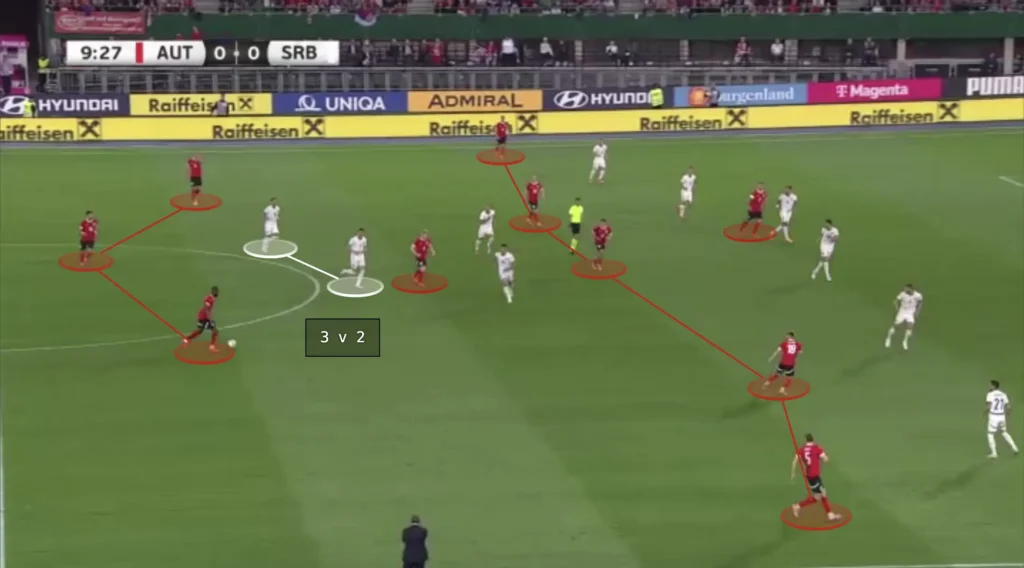
Balls in Behind
The Austria wingers and fullbacks constantly make runs in behind when the defenders or midfielders have the ball, leading to many goalscoring opportunities from dangerous through-balls. This constant threat prevents the opposition from playing with a high backline and closing the space between the lines. Instead, they have to drop the backline and protect the space in behind. This opens the space in front of the backline for the Austrian midfielders to exploit.
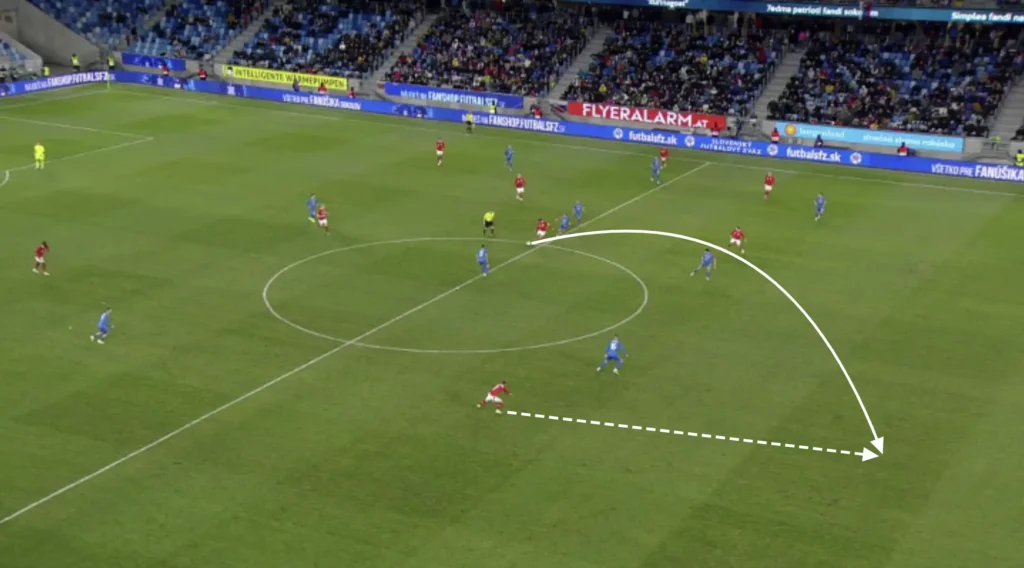
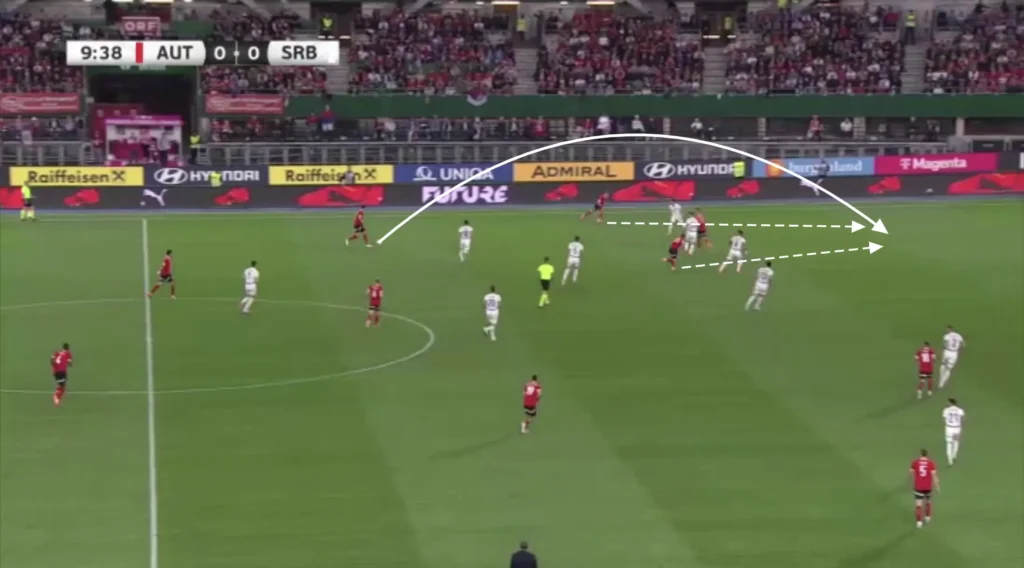
Final Third
Attacking the Half-Space
Rangnick’s teams usually look to create chances by attacking the space between the opposition center-back and fullback. They primarily do this from the wide areas with underlaps from the wingers. When the Austria fullback receives the ball out wide, he will attract the opposition fullback. This opens the space between the fullback and the center-back, which allows the inverted winger to make the underlapping run into this space. The ball can be played to the winger, who can cross the ball into the box or attack his defender in a 1v1 situation.
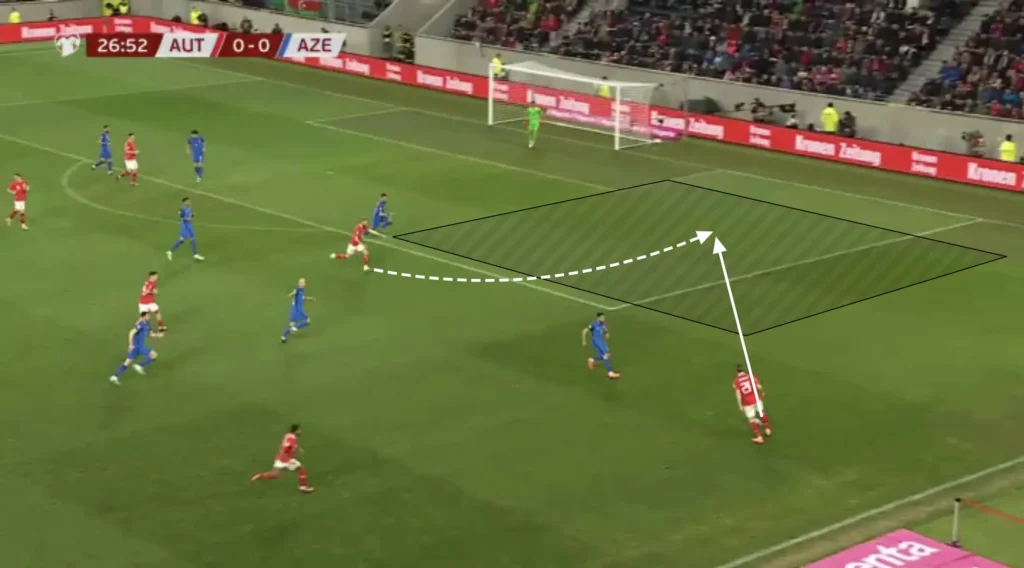
The fullback does not have to play the ball to the underlapping player. The underlapping player will often drag away a defensive midfielder, which opens the space inside. The fullback can take the ball inside and shoot or find a pass to a free player in front of the backline.
Overlaps
Austria have also used overlaps to produce opportunities in the final third. When the winger is positioned on the wing and gets the ball, the Austrian fullback will quickly make the overlap, creating a 2v1 on the wing. If the opposition fullback drops to cover the overlapping run, the winger could cut inside, taking a shot or combining with a midfielder. If the fullback covers the center, the ball can easily be played to the overlapping player, creating a crossing opportunity.
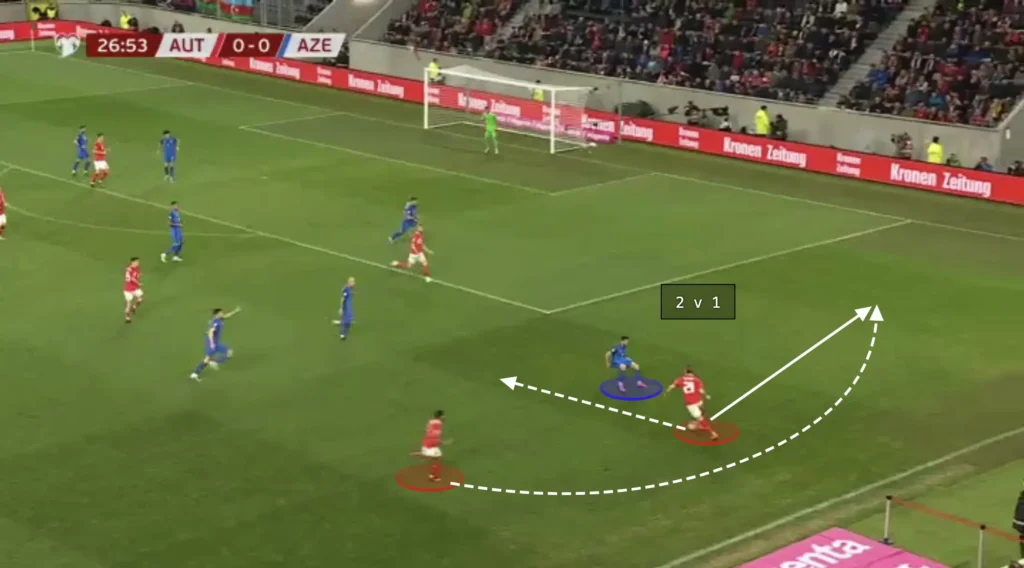
Many Players in the Box
The wingers and fullbacks look to make runs into the box when the ball is in the final third, often getting four or five players into these areas to create overloads. The numerical advantages in the box force the defending team to make decisions and leave some players open.
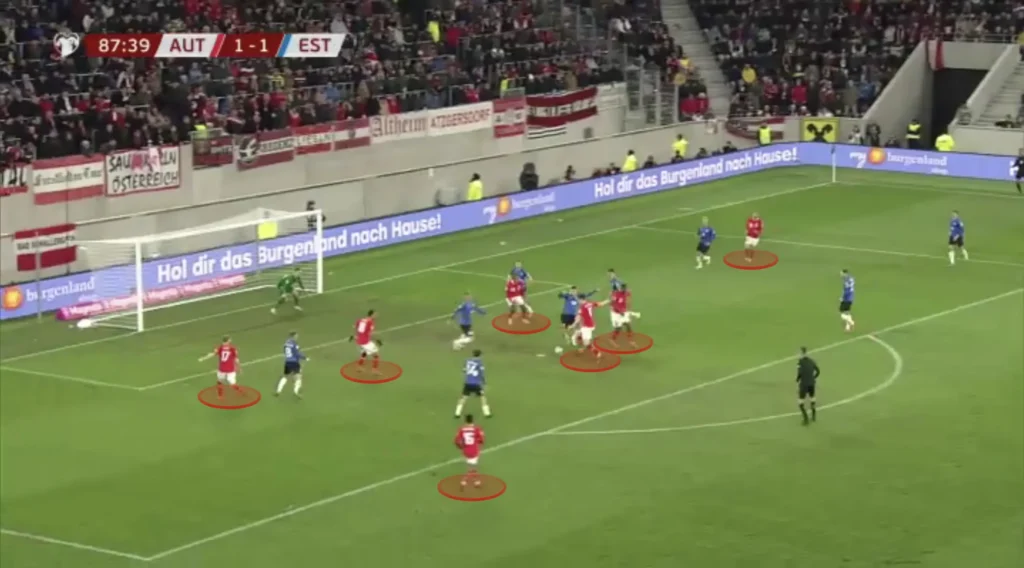
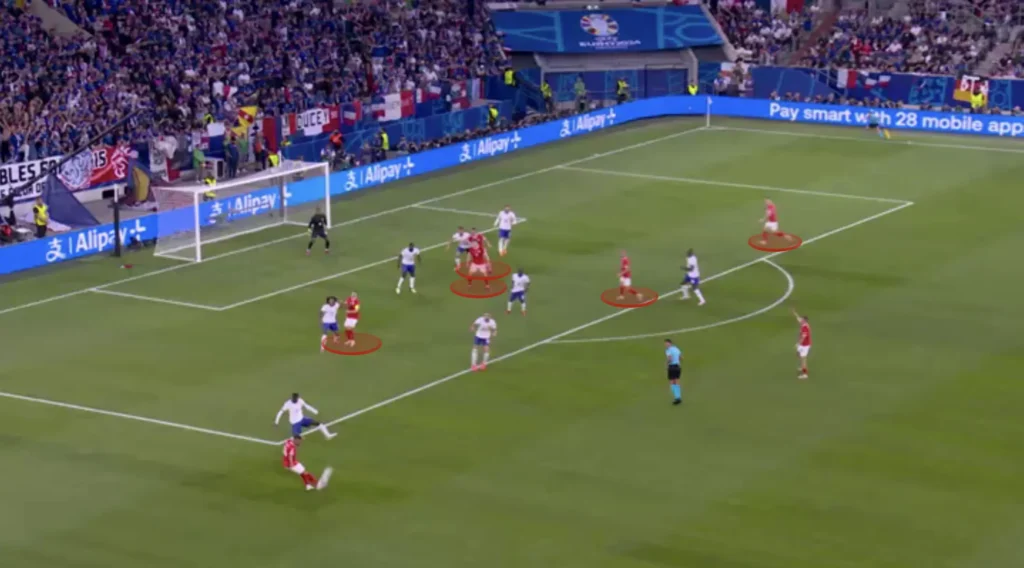
Austria score many of their goals from crosses to the fullback at the back post. The opposition fullback will often be preoccupied with an Austrian winger, which leaves massive space at the back post for the fullback to attack.
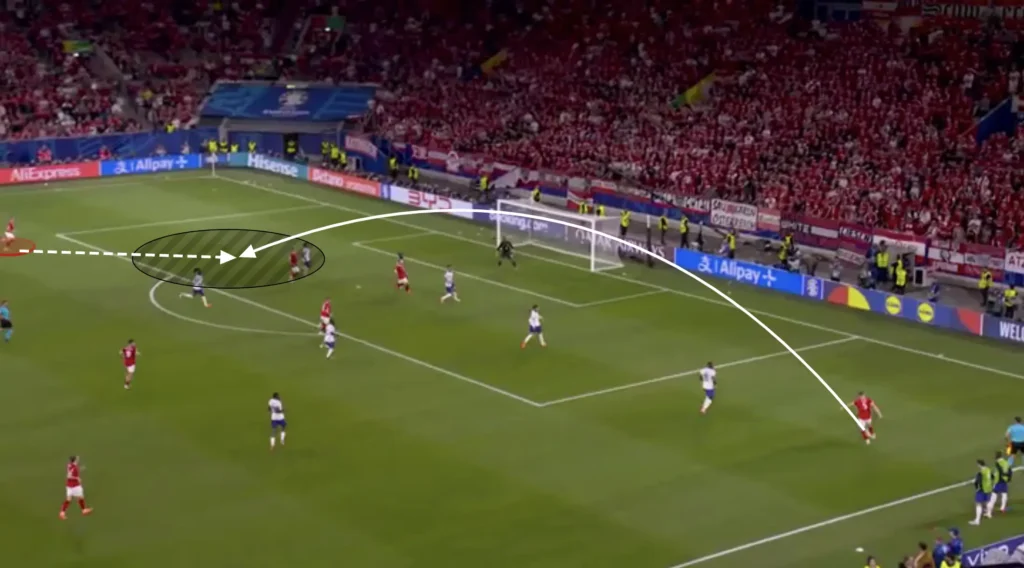
Rangnick also positions many players outside the box, ready for the second balls and cut-backs. They always succeed in pushing down the opposition’s defense, which opens the space in front of the backline. The midfielders will often be found in these spaces with cut-backs, and from there, they can shoot or combine with an attacker to create goalscoring opportunities.
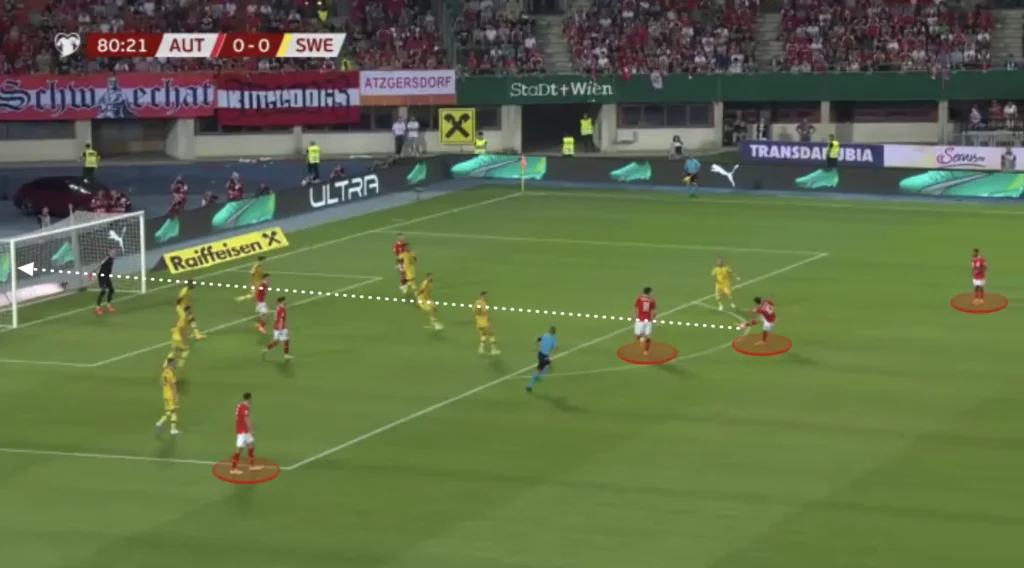
Defending
Low Press
Rangnick’s Austria uses a 1-4-4-2 formation in the low press. They look to set up in a mid-block, trying to close the center and force the opposition out wide. Rangnick always wants his team to stay extremely compact, prioritizing making the space between the midfield and backline as small as possible.
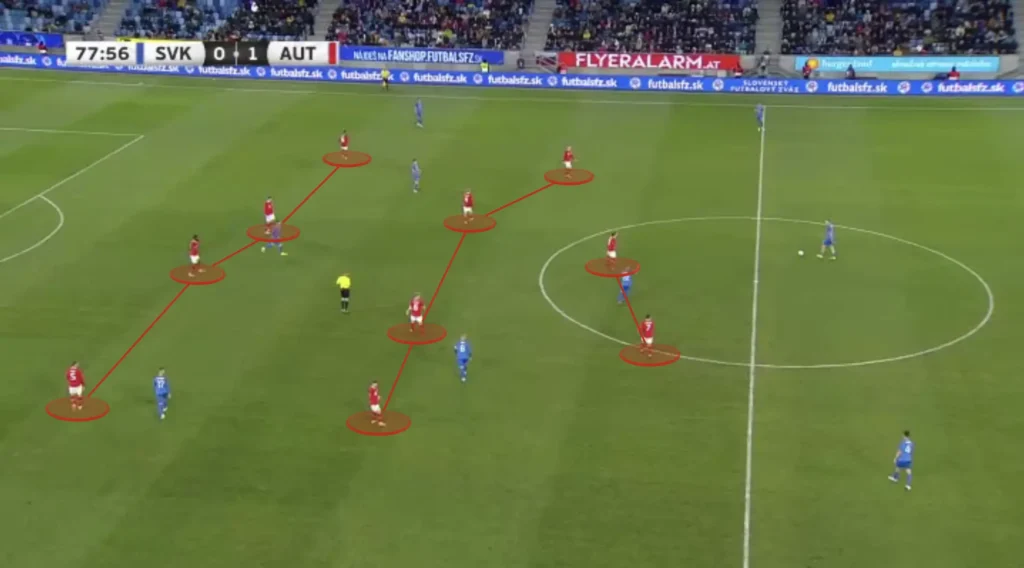
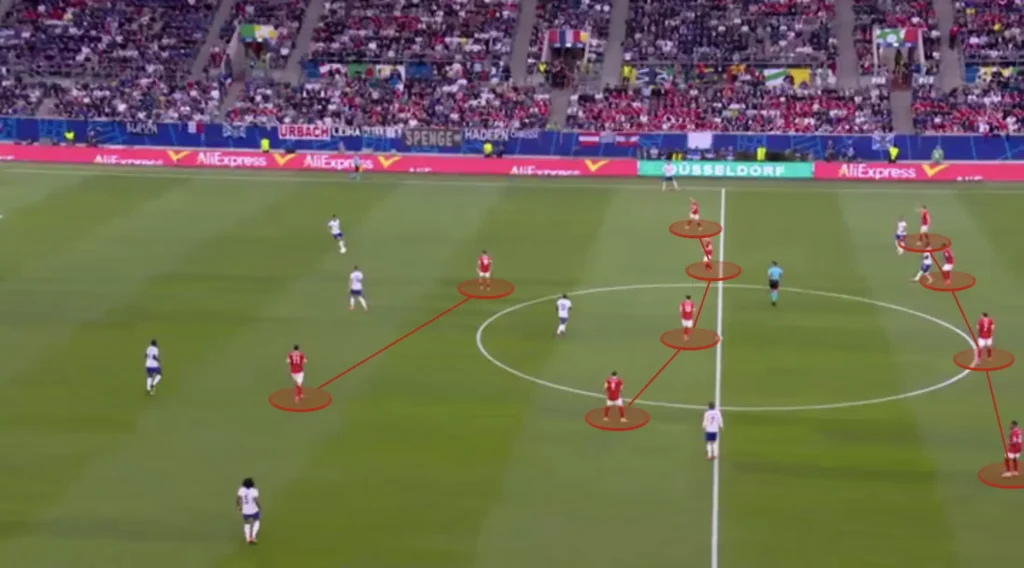
Rangnick always wants his team to squeeze the pitch when defending. This means constantly pushing the team up as much as possible. Every time the opponent plays a slow, sideways pass or a back pass, Austria’s first line of pressure pushes up, with the rest of the team following to stay compact. When the next pass comes, they push up even more, forcing the opponent back even more. They do this because it pushes the opponent further away from the Austrian goal, making it harder to create chances.
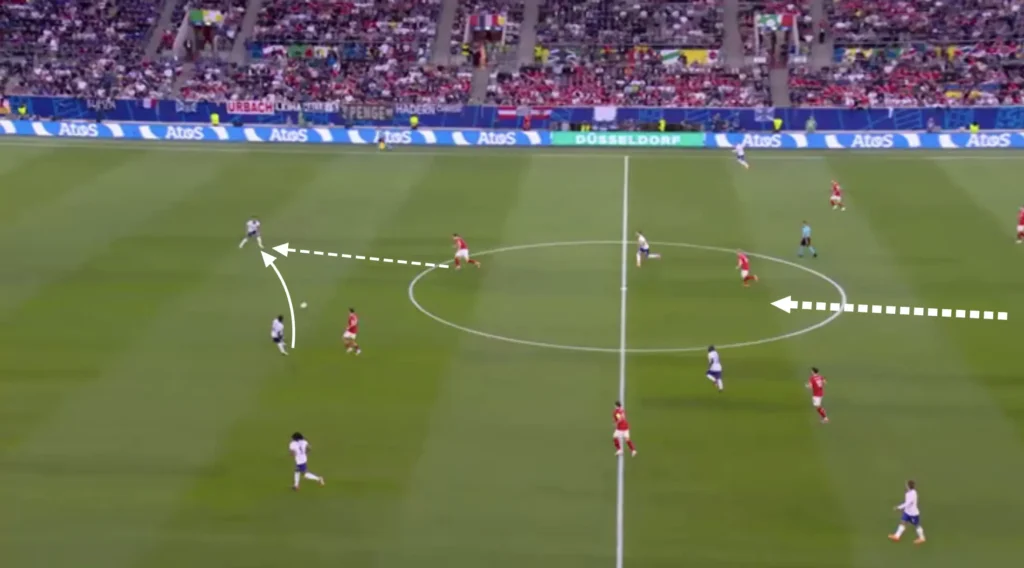
High Press
Rangnick’s players press the opposition high when possible and do so in their 1-4-4-2 formation. They push the opposition to one side and come over with many players to close the pass to the other side. Rangnick wants his team to create overloads on the ball-side and aggressively go at the opposition. When the ball gets played to the opposition fullback, Austria will immediately push over and press, looking to win the ball high up the pitch.
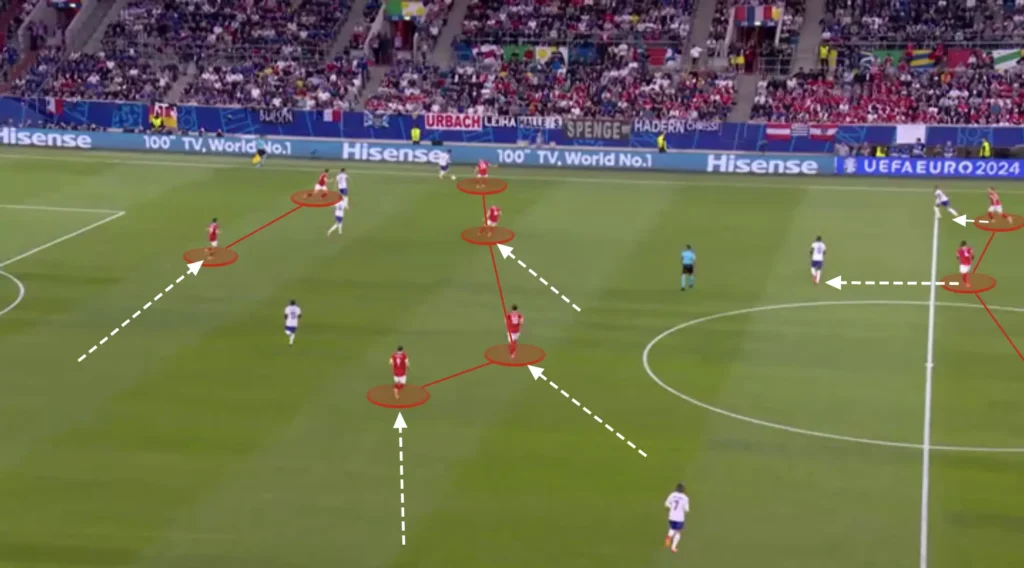
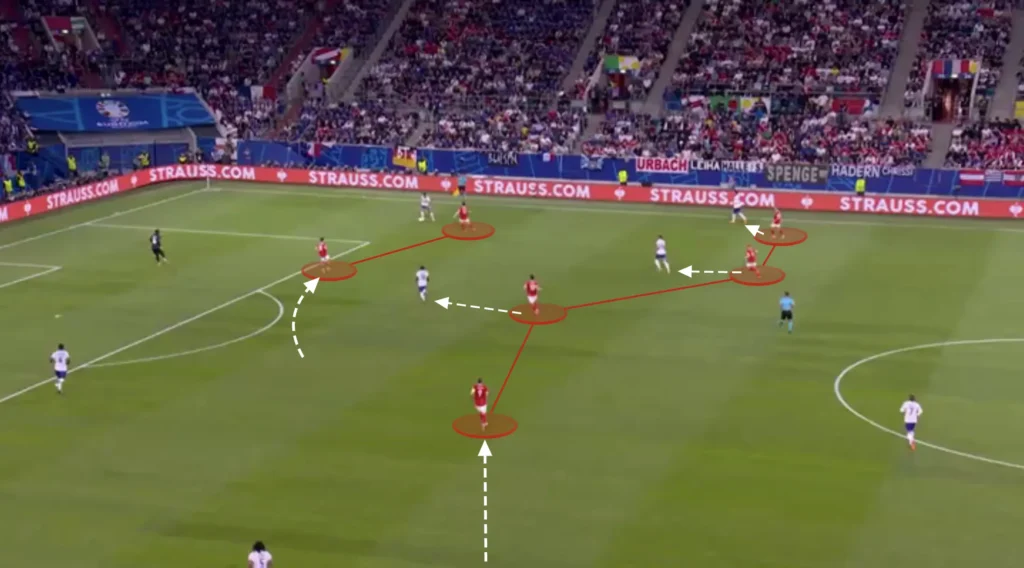
Austria almost use their high press as an attacking threat, scoring many goals from winning the ball in their high press. Here, two players press the opposition’s holding midfielder and win the ball. They get it to the striker who is very close to the goal and scores with an easy finish.
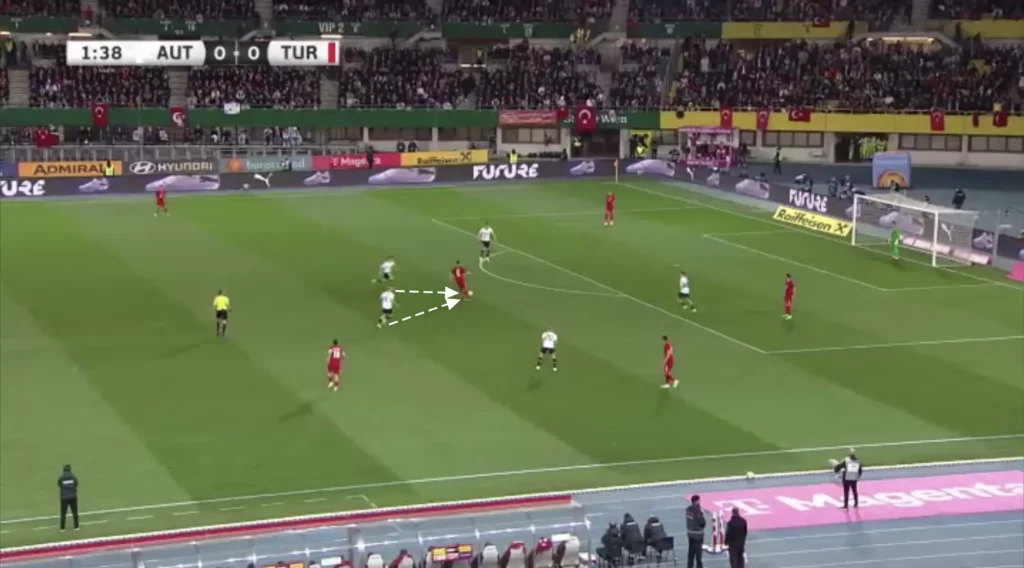
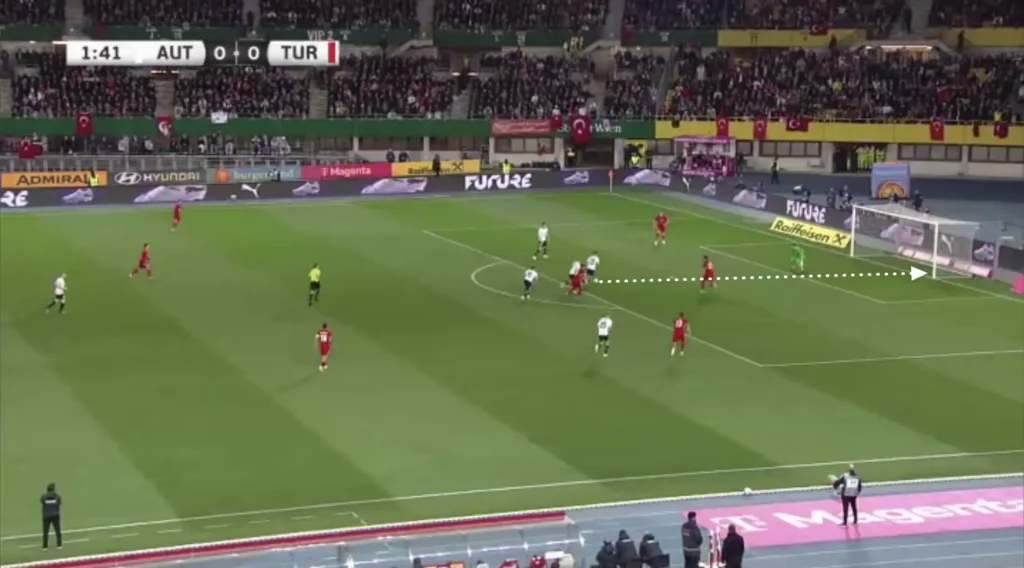
Transitions
Defensive Transitions
Positioning many players centrally, creating a numerical advantage in the midfield, creates good conditions in defensive transitions. Many players close to the ball after losing possession means that many players can work towards regaining possession. Rangnick’s players are also very aggressive in the first seconds after losing the ball. The four or five players closest will immediately jump on the opposition player with the ball and close the distance to cut off any passing lanes. Rangnick’s team, therefore, often regains possession directly after losing it.
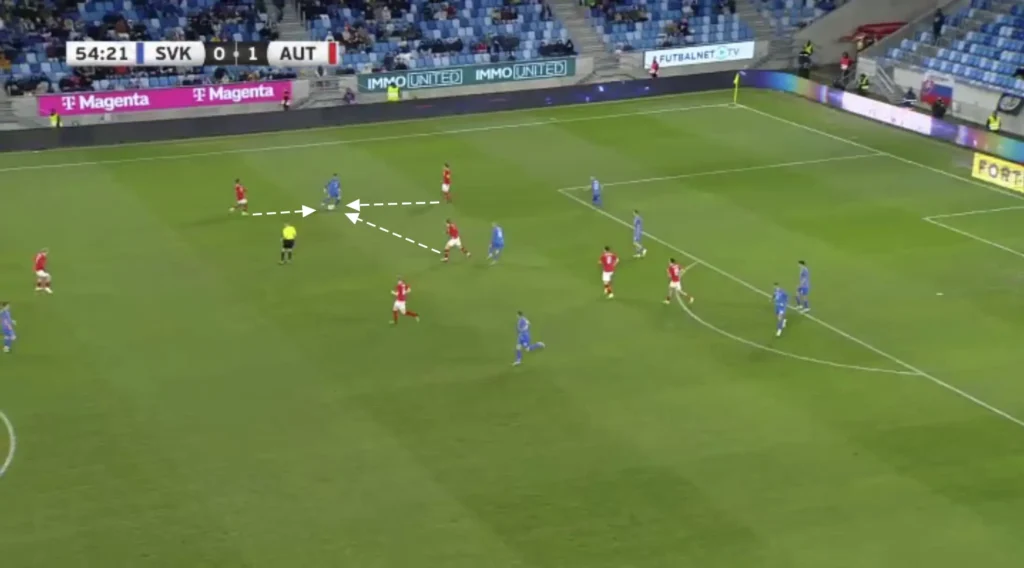
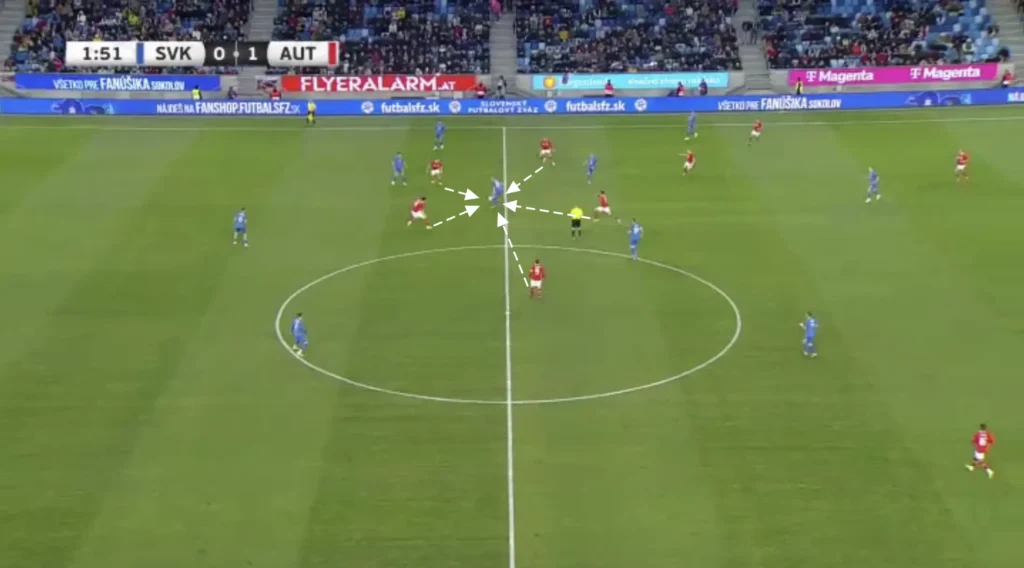
Offensive Transitions
Rangnick also wants his team to counterattack in their offensive transitions. The first thought is always to play forward when they win the ball. Austria look to counterattack with a high tempo, often attacking the spaces between the center-backs and fullbacks. In addition, keeping many players centrally while defending enables them to incorporate more players into the counterattacks.
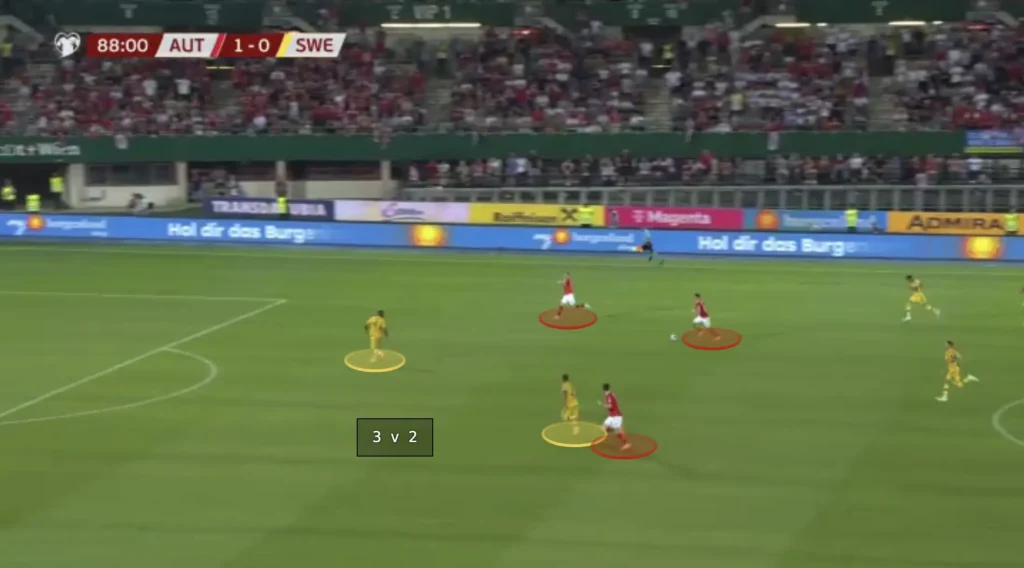
Final Thoughts
In conclusion, Ralf Rangnick’s influence on the Austrian national team is evident through a tactical approach that prioritizes high pressing, quick transitions, and fluid formations. His emphasis on disciplined defensive structures combined with dynamic attacking movements has transformed Austria into a more cohesive and competitive side. Rangnick’s ability to adapt and innovate ensures that the team is well-prepared to face various challenges on the international stage.
As Austria continues to evolve under Rangnick’s guidance, the tactical principles discussed in this analysis highlight the strategic depth and versatility he brings to the team. The blend of experience and modern footballing concepts promises a bright future for Austrian football. Fans and analysts alike can look forward to witnessing the ongoing development and success of the team under Rangnick’s astute leadership.
